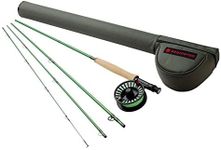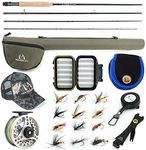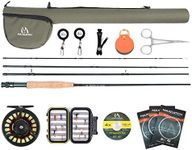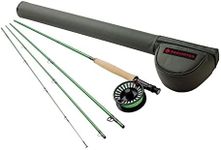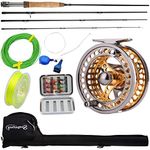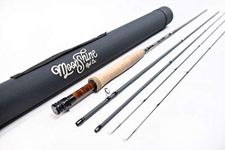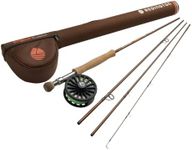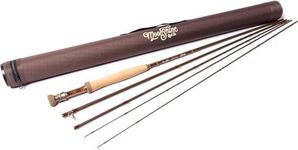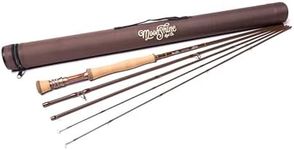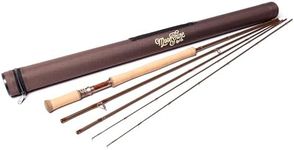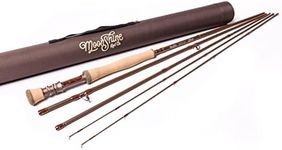Buying Guide for the Best Fly Fishing Combos For Beginners
Choosing a fly-fishing combo as a beginner can feel overwhelming, but the right setup will make learning much easier and more enjoyable. A fly-fishing combo typically includes a rod, reel, and line that are matched to work well together. When picking your first combo, focus on ease of use, versatility, and comfort. Think about where you’ll be fishing most often—small streams, large rivers, or lakes—and what kind of fish you hope to catch. The right combo will help you cast smoothly, control your line, and land fish with confidence.Rod LengthRod length refers to how long the fly rod is from end to end. This is important because it affects how far and accurately you can cast, as well as how easily you can control your line on the water. Shorter rods, around 7 to 8 feet, are easier to handle in tight spaces like small streams with lots of trees or bushes. Medium-length rods, about 8.5 to 9 feet, are the most versatile and work well for a variety of fishing situations, making them a great choice for beginners. Longer rods, over 9 feet, are better for casting longer distances or fishing in big rivers and lakes, but they can be harder to manage for new anglers. Think about where you’ll fish most often and choose a rod length that matches those conditions.
Rod WeightRod weight is a number (like 4-weight, 5-weight, etc.) that tells you how much line the rod is designed to cast. This is important because it needs to match the size of the fish you’re targeting and the type of water you’ll be fishing. Lighter weights (2-4) are best for small fish and delicate presentations in small streams. Medium weights (5-6) are the most popular for beginners because they handle a wide range of fish sizes and water types, from trout in streams to bass in ponds. Heavier weights (7 and above) are for bigger fish or windy conditions, but they can be tiring for beginners. Most new fly fishers will be happiest with a 5- or 6-weight rod.
Rod ActionRod action describes how much and where the rod bends when you cast. This affects how easy it is to learn to cast and how the rod feels in your hand. Slow action rods bend more throughout the rod and are very forgiving, making them good for gentle, short casts. Medium action rods bend in the middle and offer a balance of power and control, which is ideal for most beginners. Fast action rods bend mostly at the tip and are powerful for long casts, but they require more skill to use. For most beginners, a medium action rod is the easiest to learn with and the most versatile.
Reel Type and SizeThe reel holds your fly line and helps you manage fish once they’re hooked. For beginners, a simple, large-arbor reel (which has a bigger center) is best because it makes retrieving line faster and reduces tangles. The size of the reel should match the rod weight—so a 5-weight rod should have a 5-weight reel. Most beginner combos come with a reel that’s already matched to the rod, but it’s good to double-check. Look for a reel that feels sturdy and easy to use, with a smooth drag system to help you control fish.
Line Type and WeightFly line is specially designed to help you cast your fly. The most common type for beginners is weight-forward floating line, which is easy to cast and works in most situations. The weight of the line should match the rod and reel (for example, a 5-weight rod needs a 5-weight line). Using the right line weight makes casting much easier and helps you present your fly naturally to the fish. Most combos include a matched line, but always check that the numbers match up.
Combo Balance and FeelHow the rod, reel, and line feel together in your hand is called balance. A well-balanced combo feels comfortable and makes casting easier, especially for beginners. When you hold the rod and reel together, it shouldn’t feel too heavy at the tip or the handle. If possible, try holding the combo before you buy it to see if it feels right for you. Comfort and confidence are key when you’re learning, so pick a combo that feels good in your hands.

